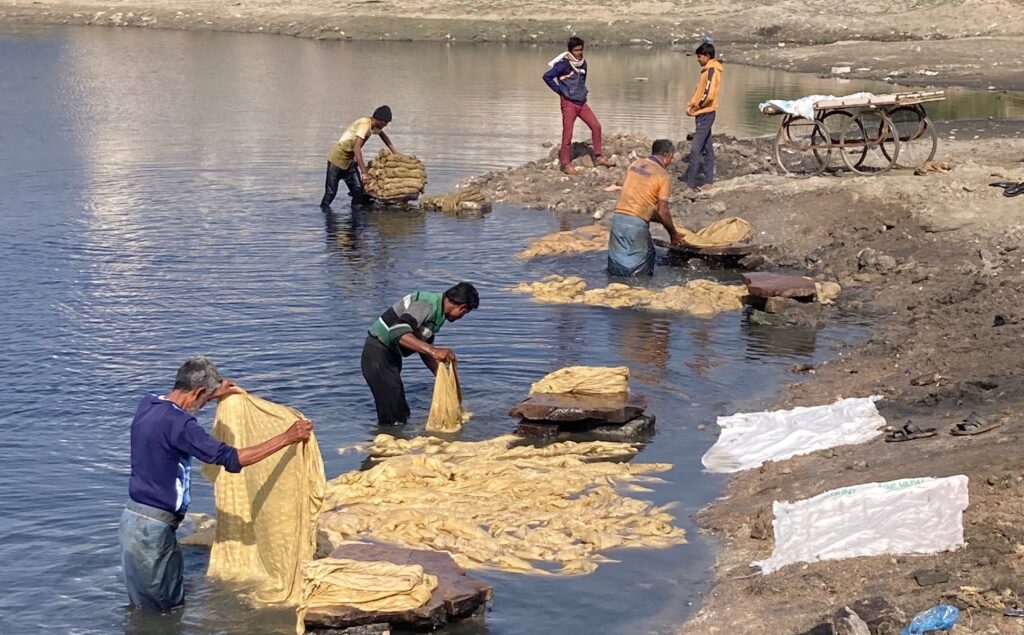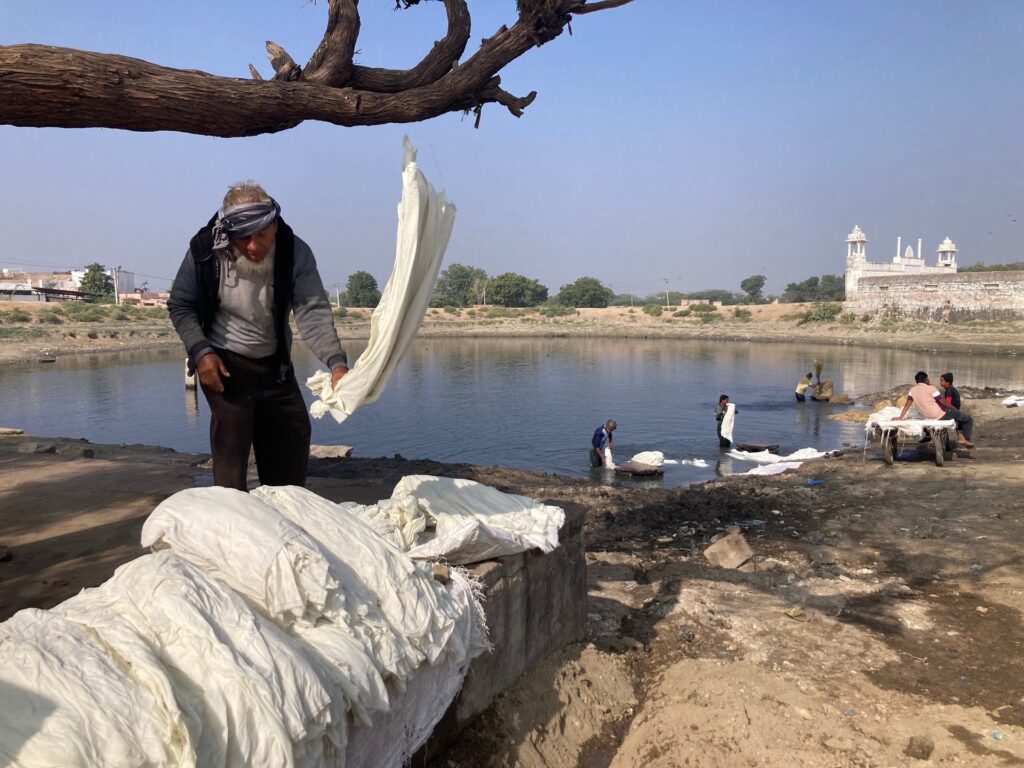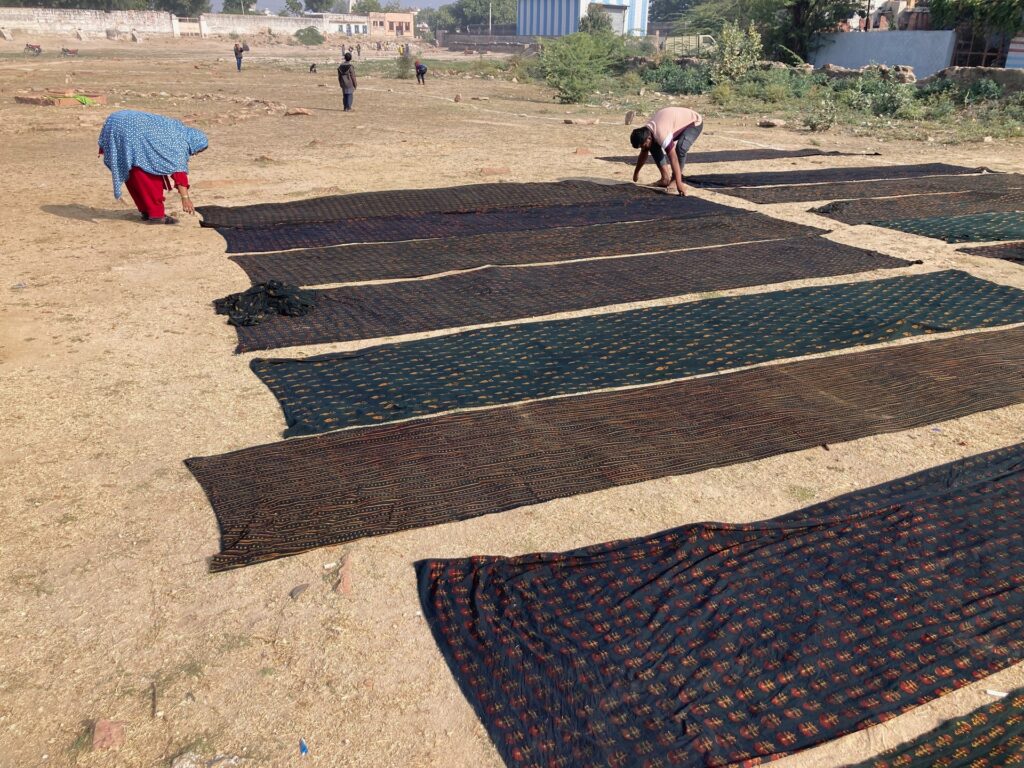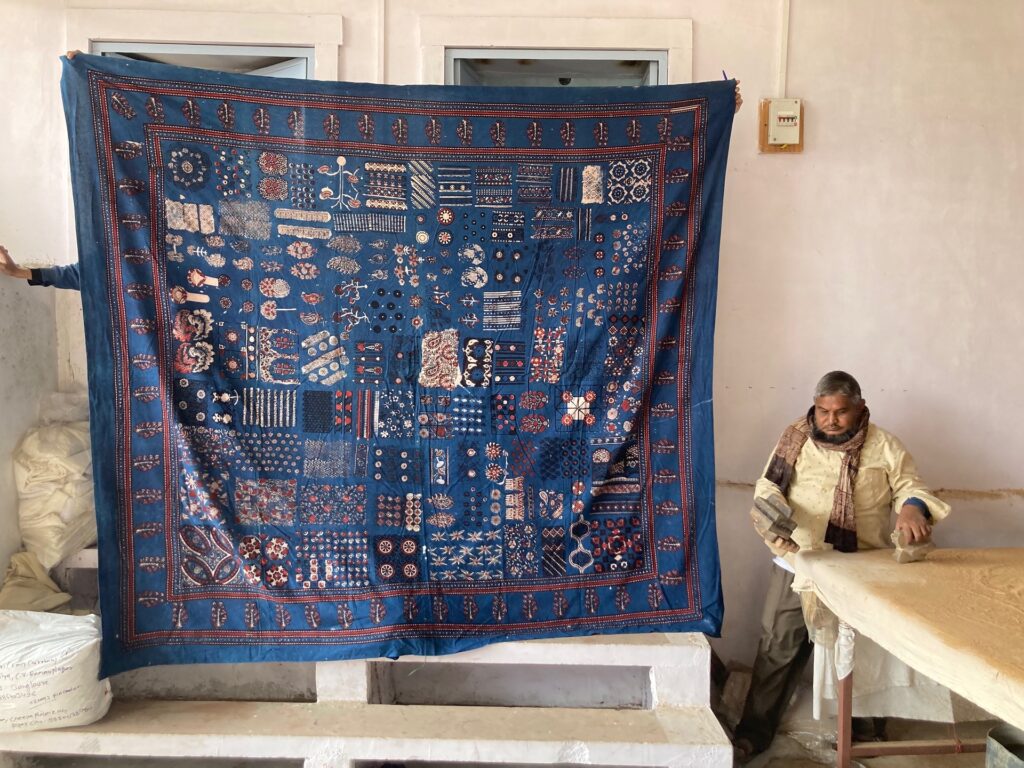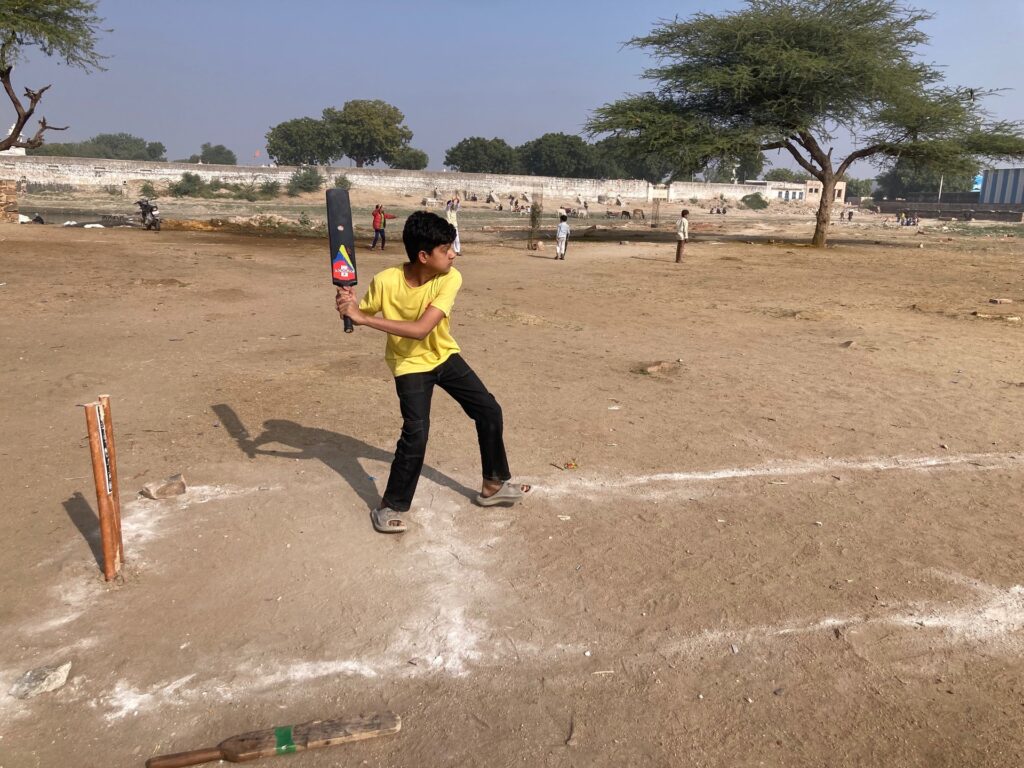Madan Meena celebrates the work of Ayub Chhipa, who has saved Chhiplai Nadi pond from pollution by synthetic dyes.
Ayub Chhipa, aged 30, has been fighting to save the community-owned Chhiplai Nadi (pond), which is used by five block-printer families from the Chhipa community in Pipar (east Rajasthan). This is a traditional water body allocated to the community for generations to use for washing the pre-printing and post-printed cloth, printed and dyed in natural dyes.
Pipar, 60 kilometres east of Jodhpur, is known for its exquisite, bold block prints in natural dyes, mud-resisted and dyed in indigo. Small and large, local and international brands have been working with Pipar after it shifted from producing traditional prints for rural communities to modern designs. The production is limited, but what they do is of good quality. Two of the families still continue to do traditional phetiya (skirt) prints for the local market.
This summer, he invested in cleaning and further deepening the Chhiplai Nadi pond
Recently, when some of the printers wanted to set up screen-printing units in Pipar and use the pond for washing their synthetic print fabric, Ayub opposed the move and succeeded in preventing the pond from being polluted. This summer, he invested in cleaning and further deepening the Chhiplai Nadi pond, and has been fortunate that it received good water during the first monsoon rainfall.
This is an exemplary case, as most of the water bodies around Jodhpur, Pali, Balotra, and Sanganer in Rajasthan are highly polluted due to the use of synthetic dyes and the failure of Common Effluent Treatment Plants (CETPs). In comparison to them, the natural dyes being used by Pipar printers are much safer and have a sustainable future.
Chhiplai is also a happening place in the town, where one can see clothes being washed and dried, children playing cricket, and people flying kites.
Madan Meena is a Former Hon. Director at Adivasi Academy, Tejgadh, Gujarat. Visit bhasharesearch.org and kotaheritagesociety.in

